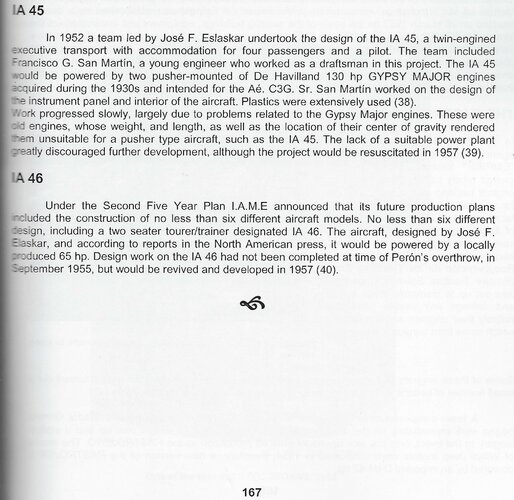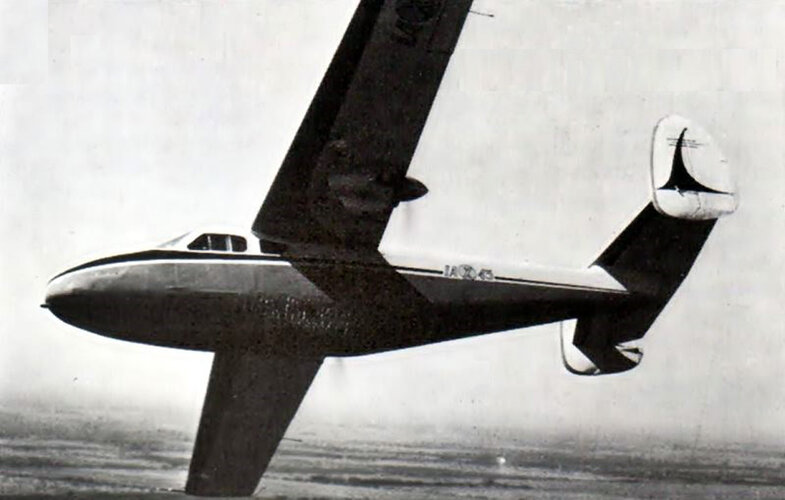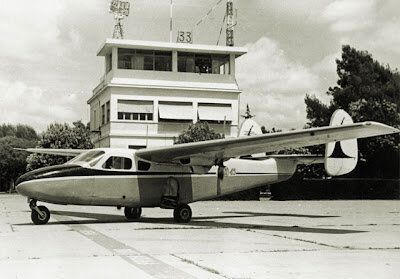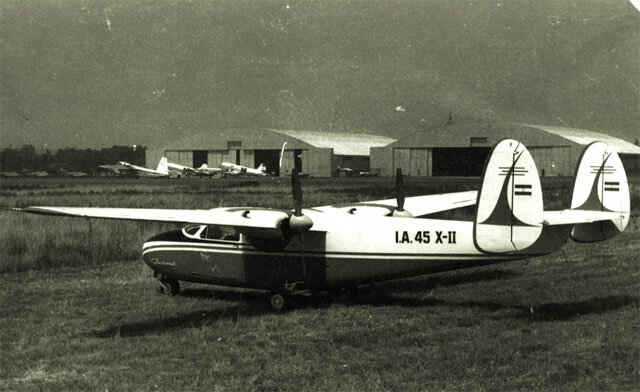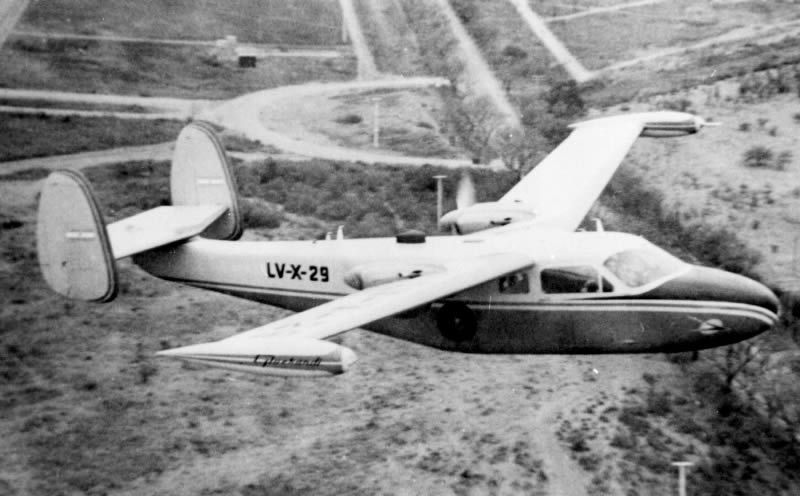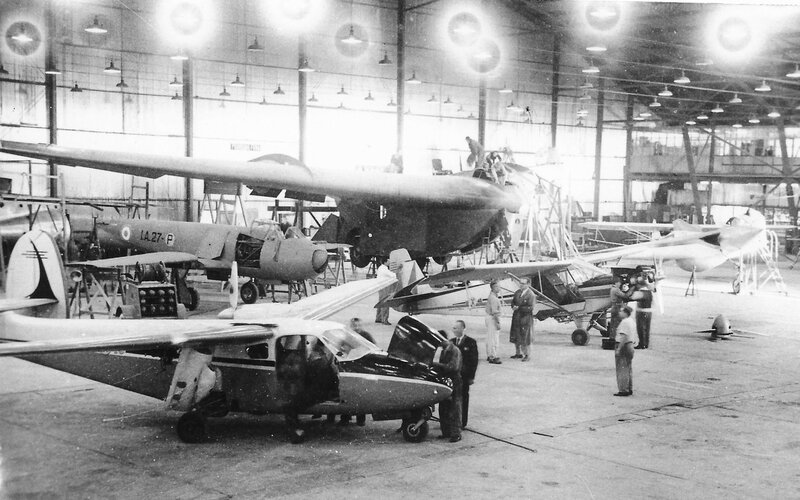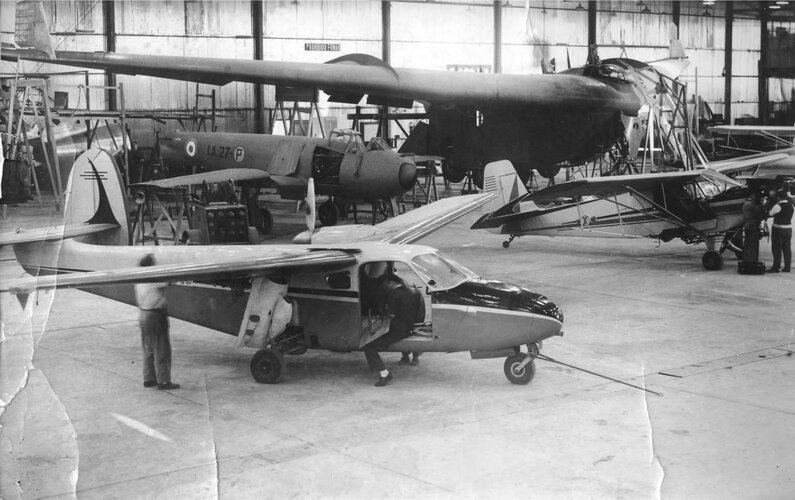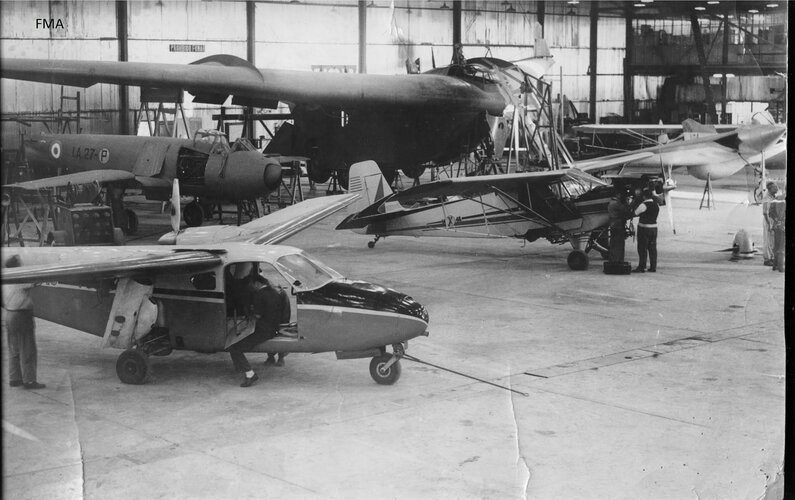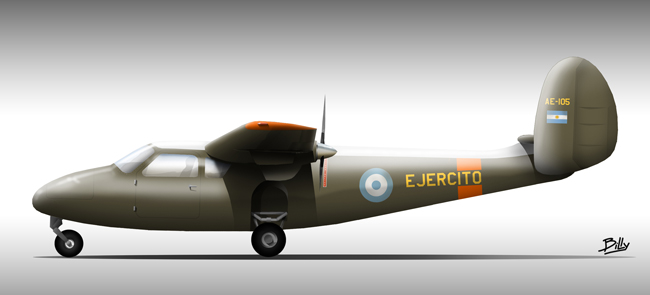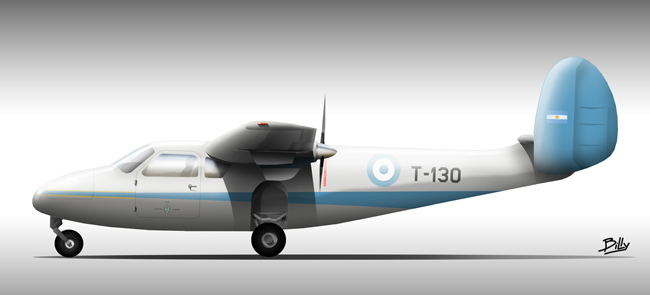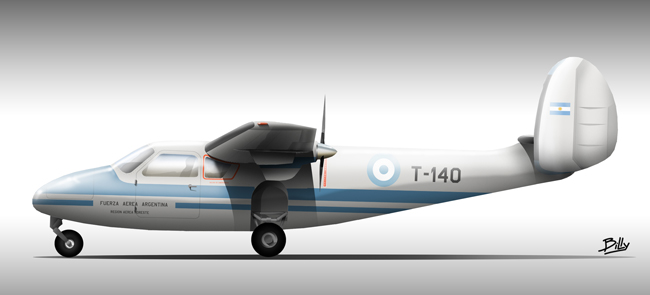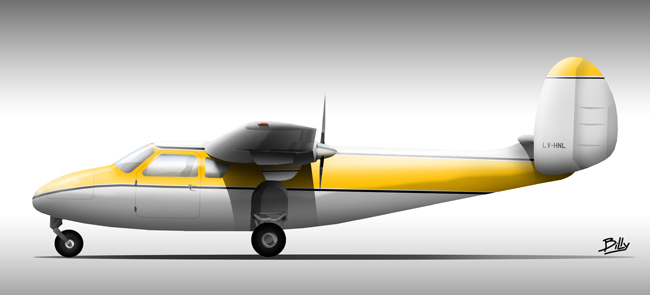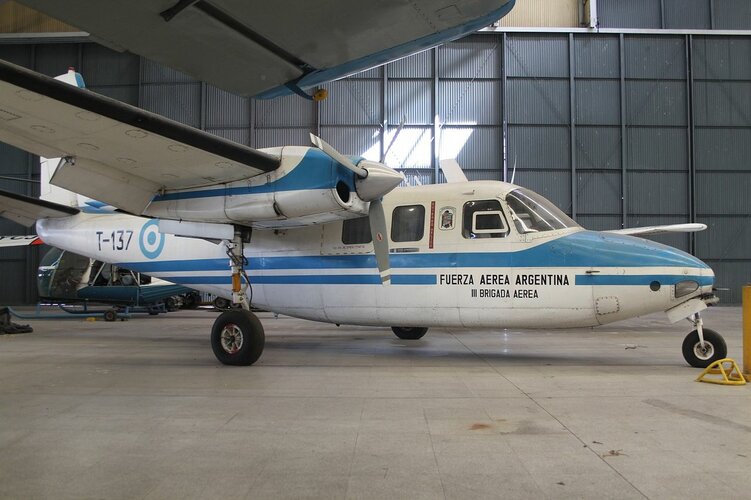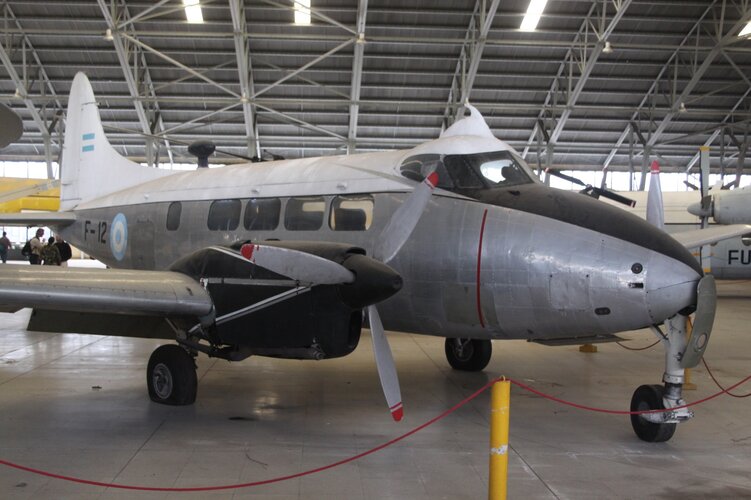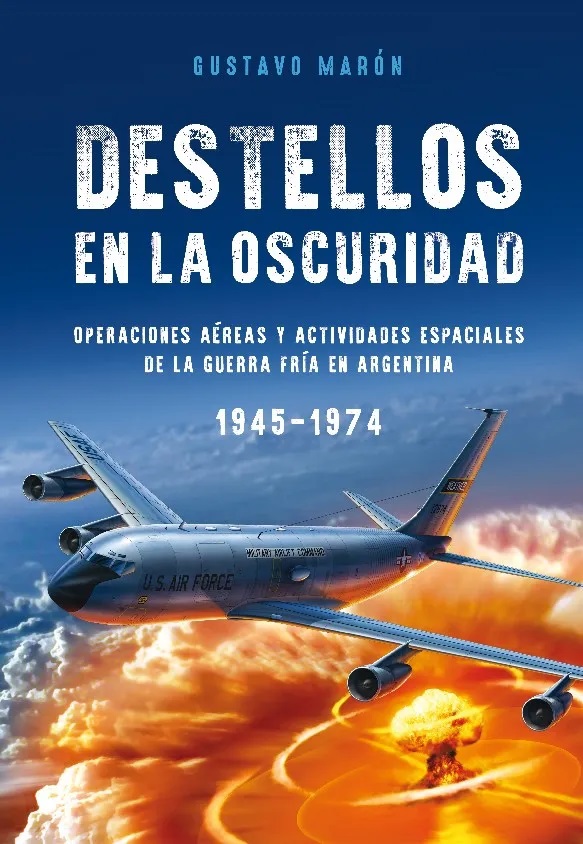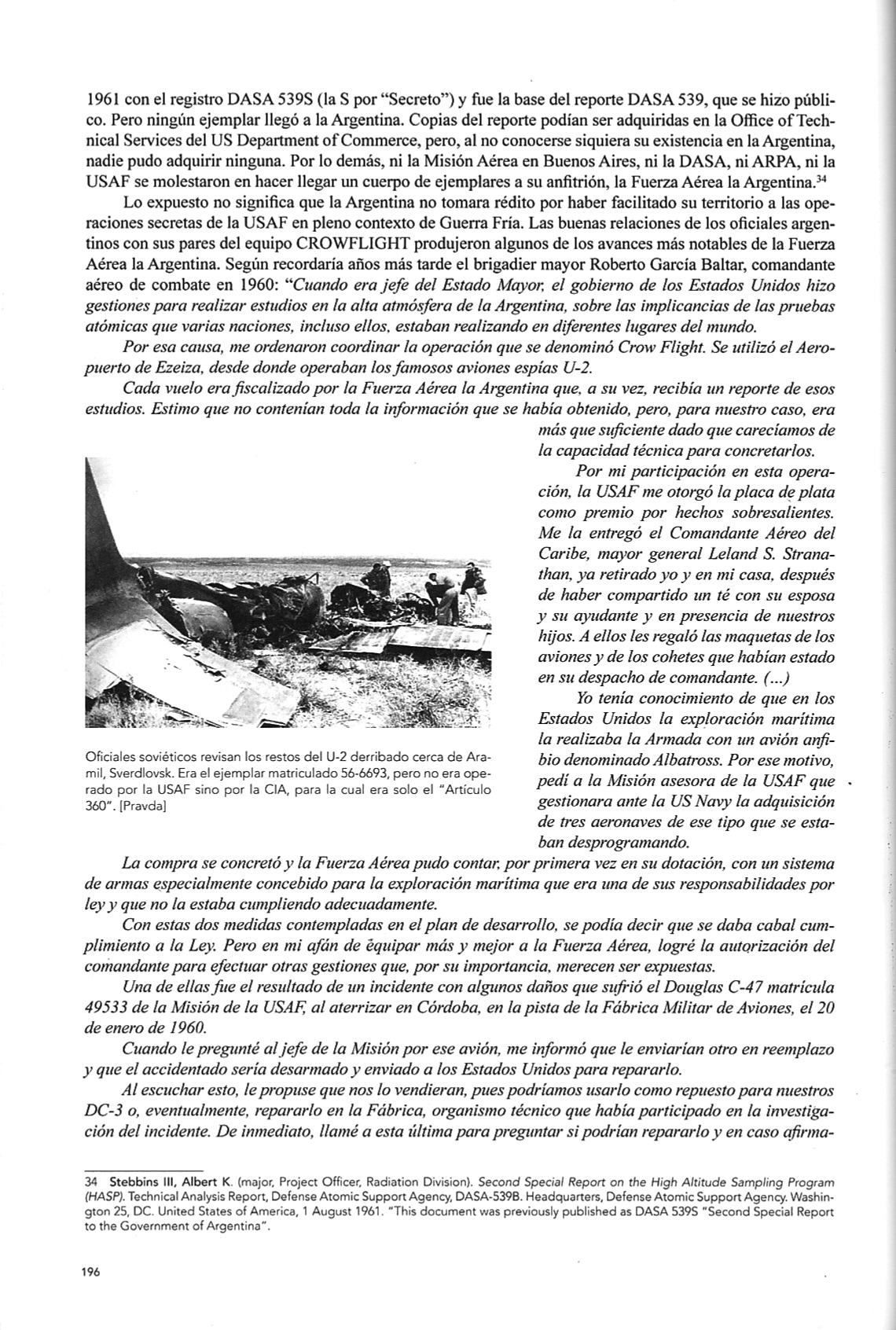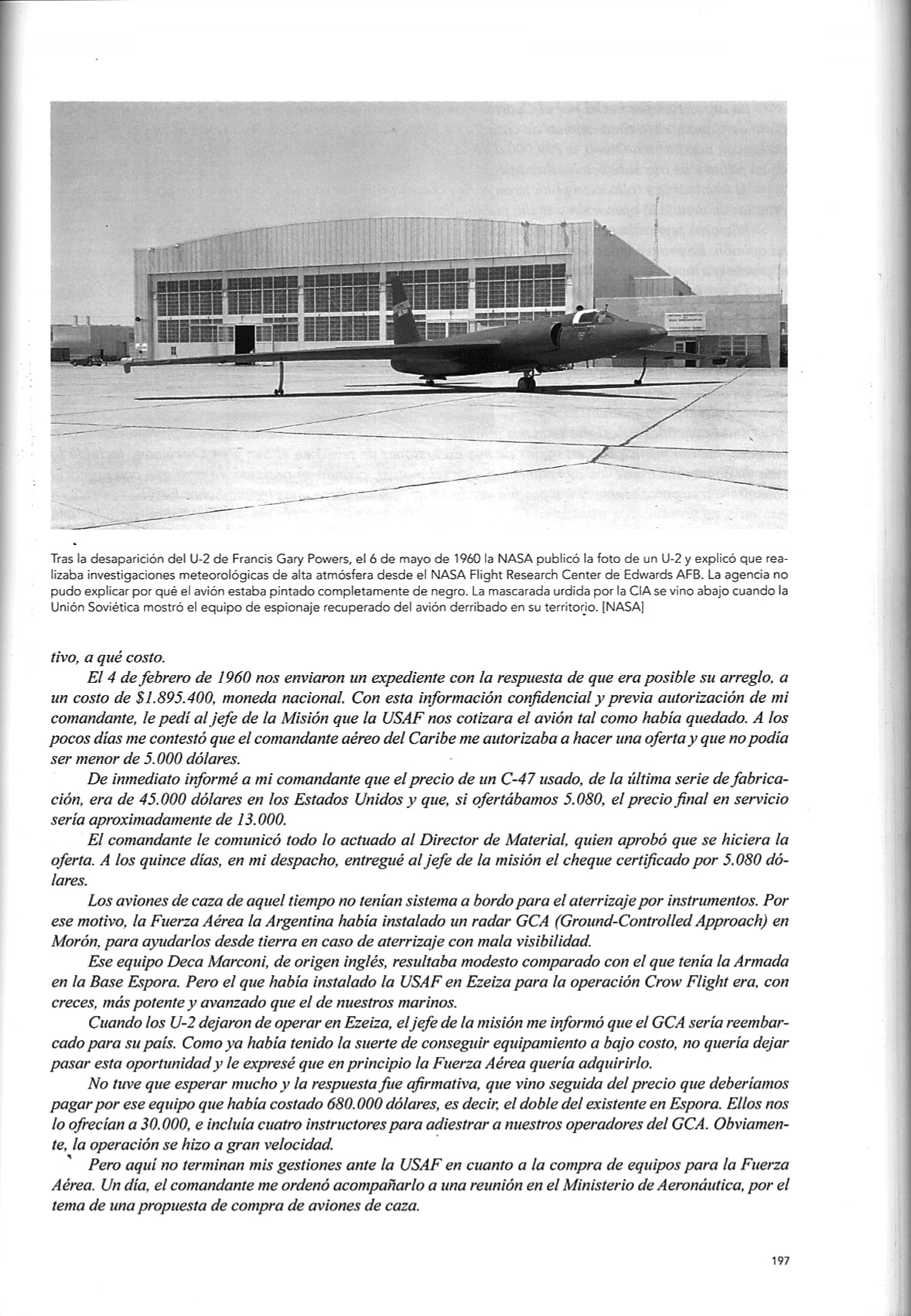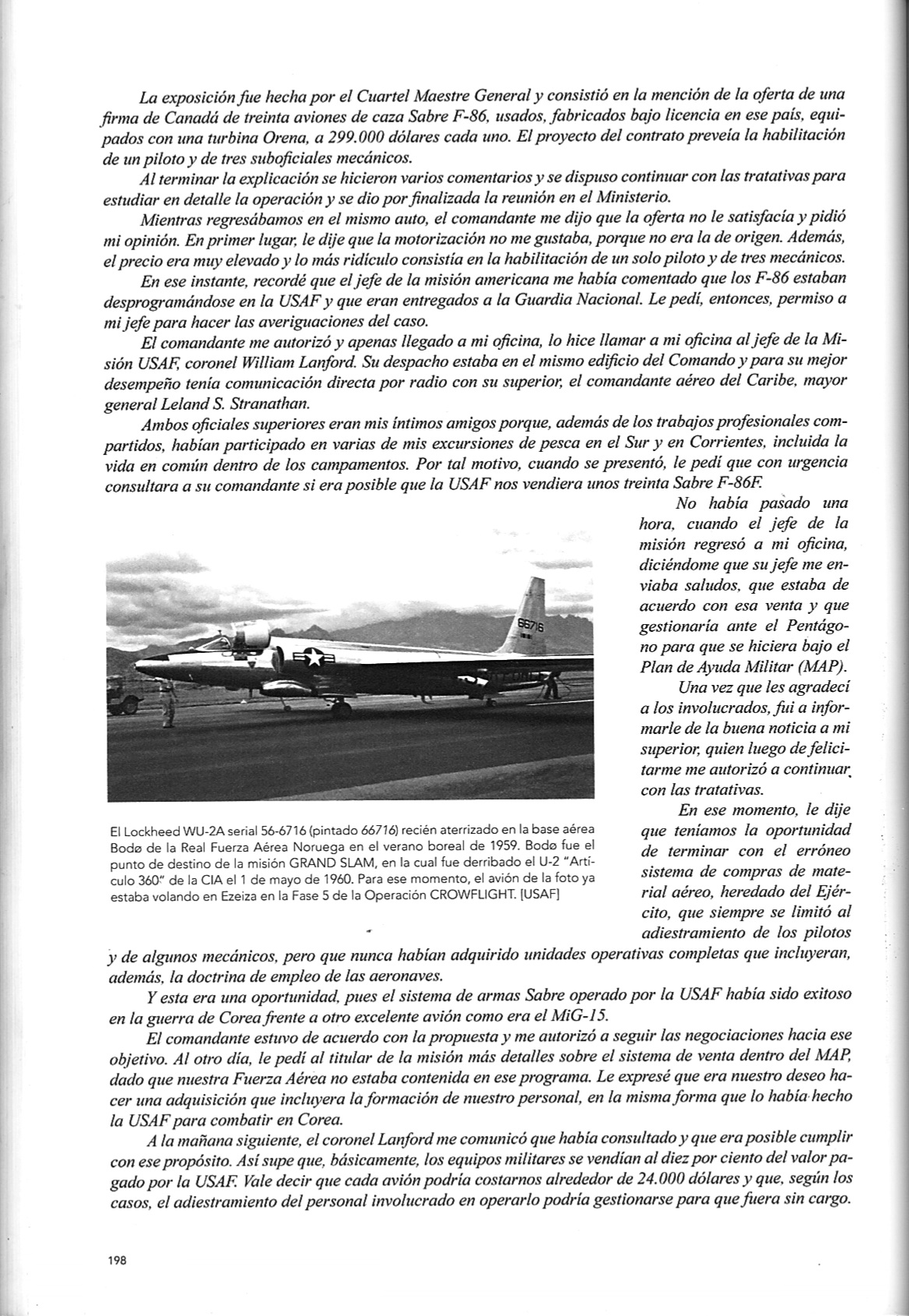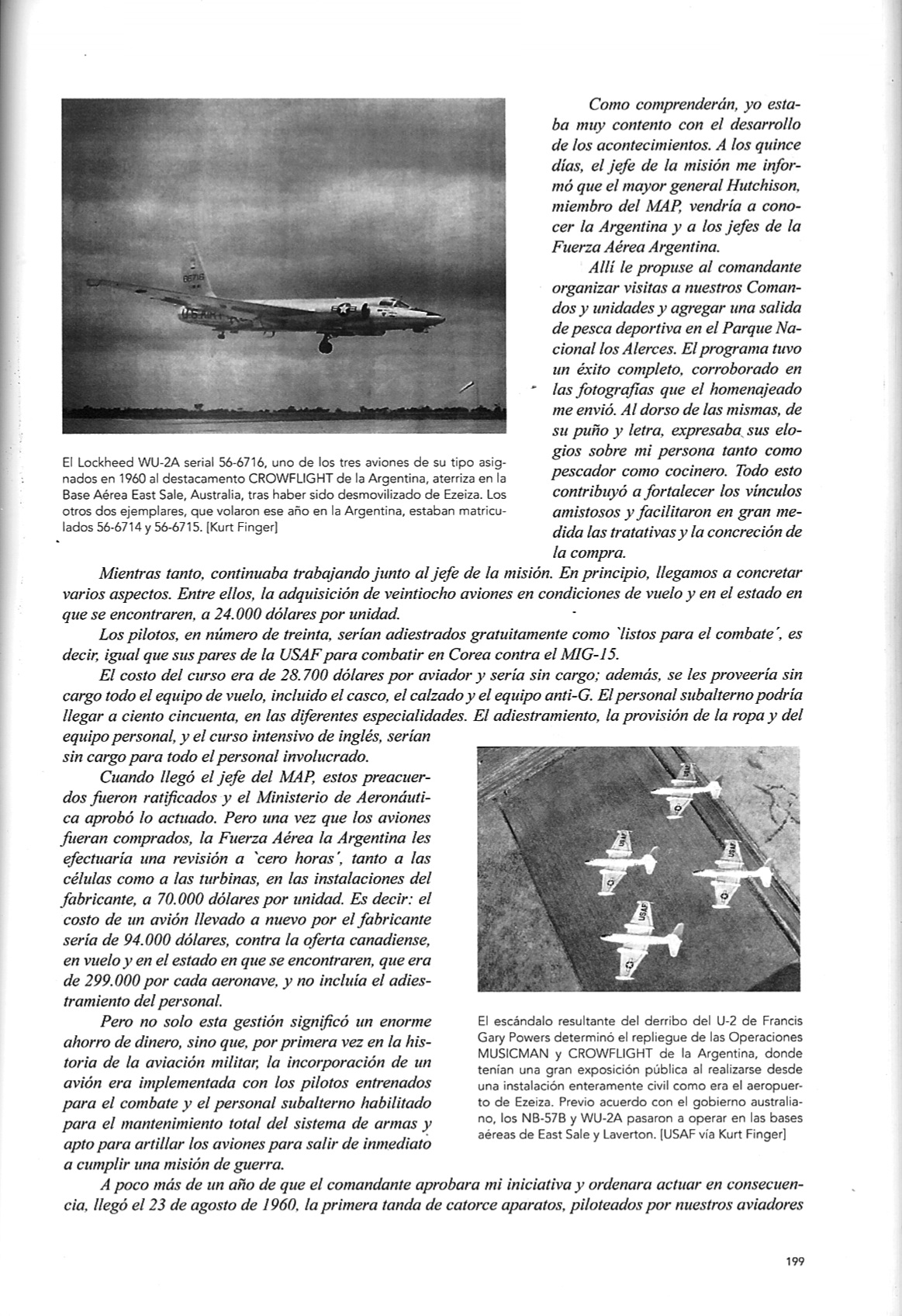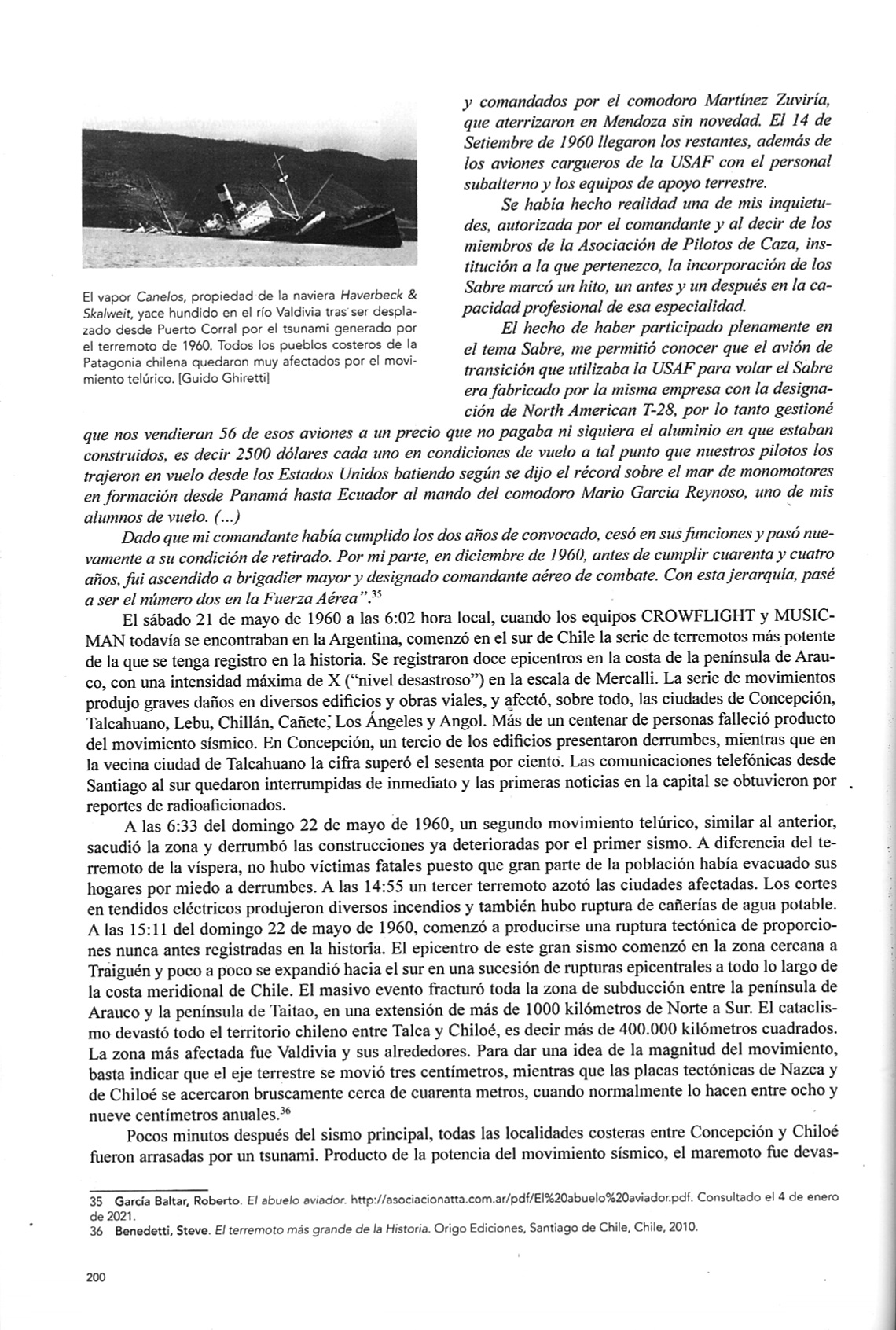The IA 45 was one of several light aircraft projected under the " II Second Five Year Plan" announced with great fanfare by the Perón regime. As as will be seen, it was originally planned to use a batch of 100 Dh Gipsy Major 140 hp acquired in 1936 and intended for the AéC.4
IA 45Prototype powered by two Avco Lycoming O-320 piston engines, one built, first flight 23 September 1957.IA 45BImproved version with six seats and powered by two Lycoming O-360 piston engines, one built, first flight 15 November 1960.
Crew: 1
IA 45Prototype powered by two Avco Lycoming O-320 piston engines, one built, first flight 23 September 1957.IA 45BImproved version with six seats and powered by two Lycoming O-360 piston engines, one built, first flight 15 November 1960.
Crew: 1
- Capacity: 5 passengers
- Length: 8.92 m (29 ft 3 in)
- Wingspan: 13.75 m (45 ft 1 in)
- Height: 2.79 m (9 ft 2 in)
- Wing area: 19.3 m2 (208 sq ft)
- Aspect ratio: 9.8:1
- Airfoil: NACA 23016 at root, 23010 at tip
- Empty weight: 1,710 kg (3,770 lb)
- Gross weight: 1,800 kg (3,968 lb)
- Fuel capacity: 400 L (110 US gal; 88 imp gal)
- Powerplant: 2 × Lycoming O-360 air-cooled flat-four engines, 130 kW (180 hp) each
- Maximum speed: 276 km/h (171 mph, 149 kn) at sea level
- Cruise speed: 245 km/h (152 mph, 132 kn) at sea level (75% power)
- Stall speed: 110 km/h (68 mph, 59 kn) (flaps down)
- Range: 1,100 km (680 mi, 590 nmi) (30 min reserves, 75% power)
- Service ceiling: 7,500 m (24,600 ft) (absolute ceiling)
- Rate of climb: 7.0 m/s (1,380 ft/min)
Attachments
Last edited:

